Hasegawa 1/72 E-2C Hawkeye 2000
By Gary Meinert
History
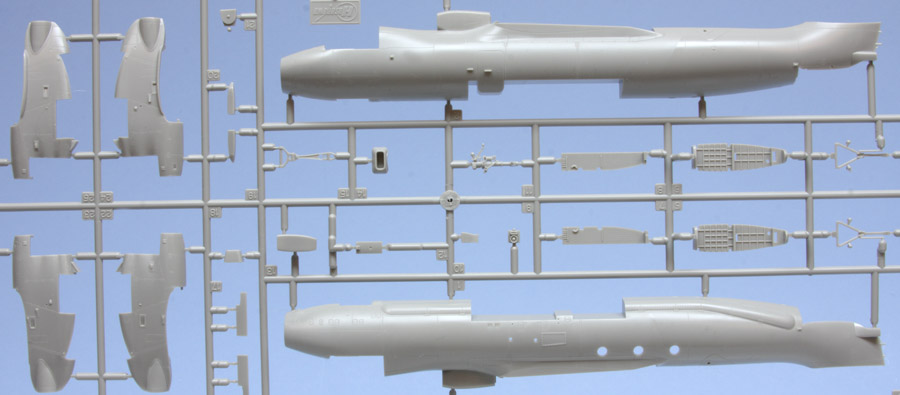 Since the mid -1960s, Grumman's Hawkeye has served as the electronic eyes and ears of the fleet. This aircraft was designed specifically for the airborne early warning (AEW) mission and provides both detection and interceptor direction to help defend the carrier battle group against airborne threats. In addition to its primary AEW mission, the Hawkeye also directs strike aircraft to their targets, performs search and rescue, and does air traffic control and communications relay tasks.
Since the mid -1960s, Grumman's Hawkeye has served as the electronic eyes and ears of the fleet. This aircraft was designed specifically for the airborne early warning (AEW) mission and provides both detection and interceptor direction to help defend the carrier battle group against airborne threats. In addition to its primary AEW mission, the Hawkeye also directs strike aircraft to their targets, performs search and rescue, and does air traffic control and communications relay tasks.
Early E-2A and E-2B Hawkeyes were soon superseded by the new- build E-2C from 1973. Advances in computer, radar, and communications technology have found their way into many E-2C upgrades. The current production version of the E-2C is called Hawkeye 2000 and features an improved mission computer and new workstations. It also has the Cooperative Engagement Capability (CEC), which is a system for collecting, integrating and sharing sensor information from other aircraft and ships.
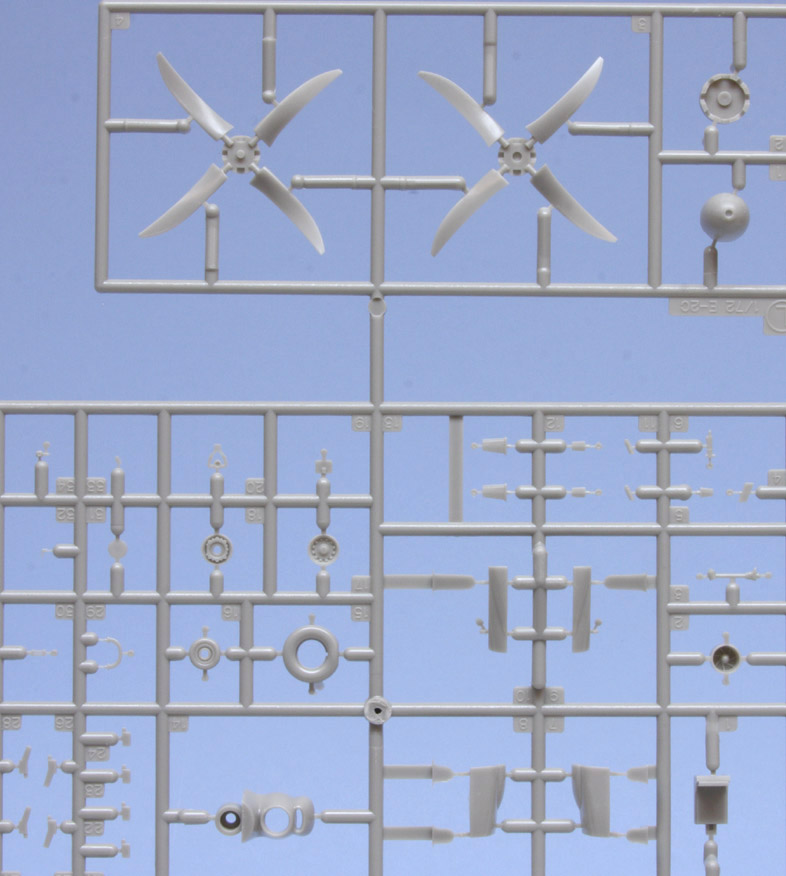 Beginning in 2005, the Hamilton Sundstrand NP2000 eight-bladed propeller was installed in the entire Hawkeye fleet. This replaces an earlier 4-bladed prop that was less efficient and more maintenance intensive.
Beginning in 2005, the Hamilton Sundstrand NP2000 eight-bladed propeller was installed in the entire Hawkeye fleet. This replaces an earlier 4-bladed prop that was less efficient and more maintenance intensive.
An even more sophisticated version, the E-2D, was test flown in 2007-08 and will soon be in production. The E-2D has a glass cockpit and upgraded radar and communications systems. The airframe is also lighter and more economical to produce because of new manufacturing methods and greater use of composite materials. Hawkeyes will be in service for many more decades in the U.S. Navy.
International customers of the Hawkeye over the years include: Egypt, Israel, Japan, France, Mexico, Singapore, and Taiwan.
The Kit
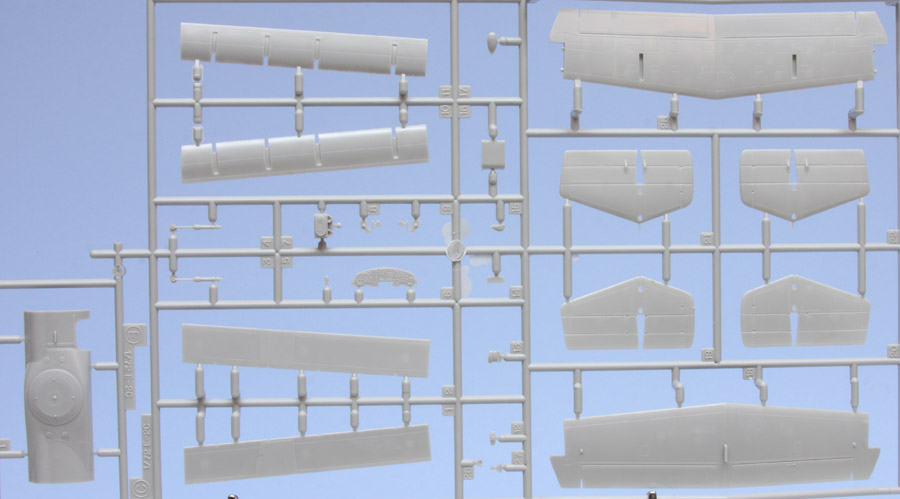 This kit has the tall "dunce cap" satellite antenna atop the rotodome and the prominent ventral bulge. (These are the external characteristics of the Hawkeye 2000.) Also featured in this kit is the NP2000 eight-bladed propeller. It is obvious from the tooling that earlier versions of the E-2C are in the works. In fact, Hasegawa has already announced two forthcoming E-2C kits (one in US Navy and the other in Japanese markings). These kits will have the older four-bladed props and the smooth (non-bulged) bellies. By choosing the appropriate kit(s) the modeler could build almost any E-2C aircraft from any era, assuming that the proper aftermarket decals are available.
This kit has the tall "dunce cap" satellite antenna atop the rotodome and the prominent ventral bulge. (These are the external characteristics of the Hawkeye 2000.) Also featured in this kit is the NP2000 eight-bladed propeller. It is obvious from the tooling that earlier versions of the E-2C are in the works. In fact, Hasegawa has already announced two forthcoming E-2C kits (one in US Navy and the other in Japanese markings). These kits will have the older four-bladed props and the smooth (non-bulged) bellies. By choosing the appropriate kit(s) the modeler could build almost any E-2C aircraft from any era, assuming that the proper aftermarket decals are available.
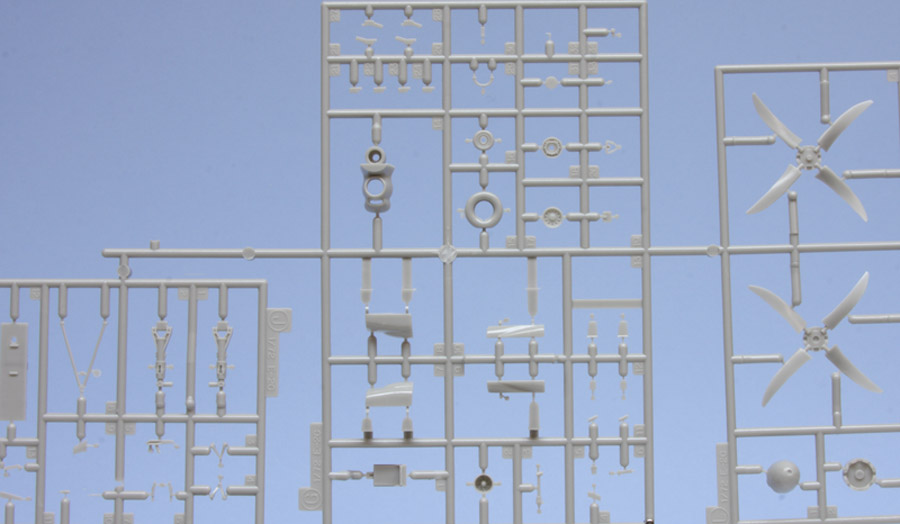 No provision is made for folded wings in this kit. However, the plastic on the inside of the wings has been thinned out in a channel in the very location where a brave modeler (not me) could in theory cut the wings apart and scratch-build all the internal structure for a folded-wing display option.
No provision is made for folded wings in this kit. However, the plastic on the inside of the wings has been thinned out in a channel in the very location where a brave modeler (not me) could in theory cut the wings apart and scratch-build all the internal structure for a folded-wing display option.
All parts trees are packaged together in one bag, except for the transparent parts in a separate bag. As expected, the molding quality is excellent with petite engraved surface detail. I found no flash or sink marks, and only a few small ejector pin marks to deal with on the landing
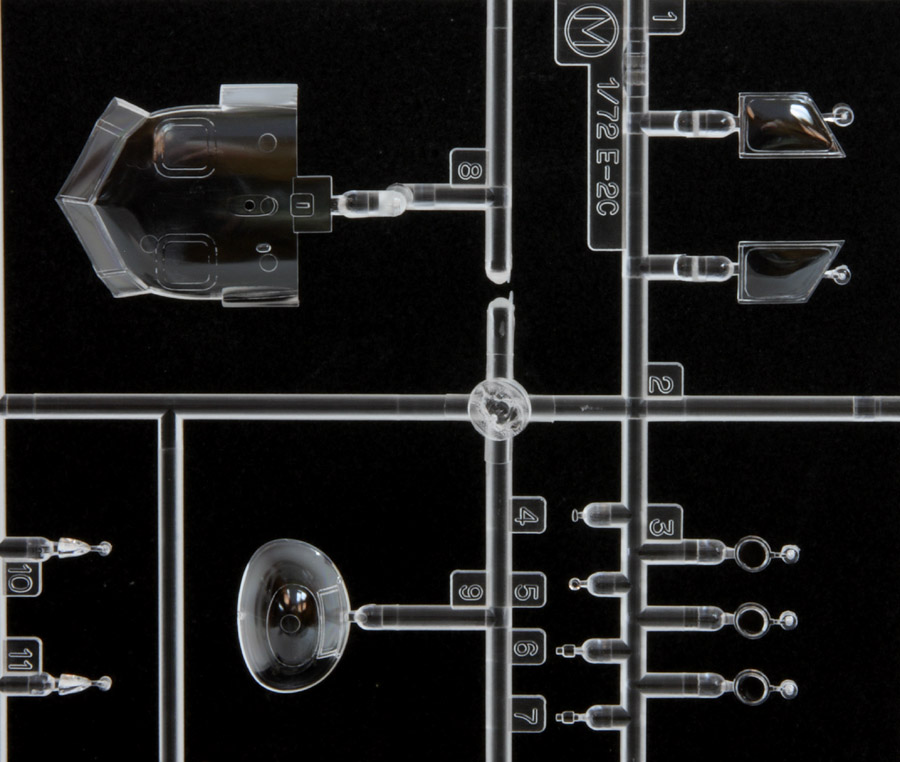 gear legs, the roof of the nose wheel well, and in the sides of the main gear wells.
gear legs, the roof of the nose wheel well, and in the sides of the main gear wells.
The clear parts in the nose and cockpit regions are engineered to include portions of the surrounding fuselage structure. This will surely help the assembly process. The separate side windows for the pilot and co-pilot have the correct bulged shape.
The cockpit itself is well-equipped with floor, control columns, seats, rear bulkhead and the overhead console. The instrument panel and all consoles have raised detail. (Decals are also provided for these areas.)
Other features include separate, positionable flaps and optional clear wing tip lights. The tires are flattened. The main wheels have separate hub pieces, which will allow easier painting.
Instructions and Decals
The easy to understand instructions have the typical tree & parts map, exploded assembly diagrams, and marking and painting guide. Color call-outs are for Mr. Color and Aqueous Hobby Color. You can paint your Hawkeye any color you want as long as it is FS 36440 Gull Gray--these aircraft normally have a gloss finish.
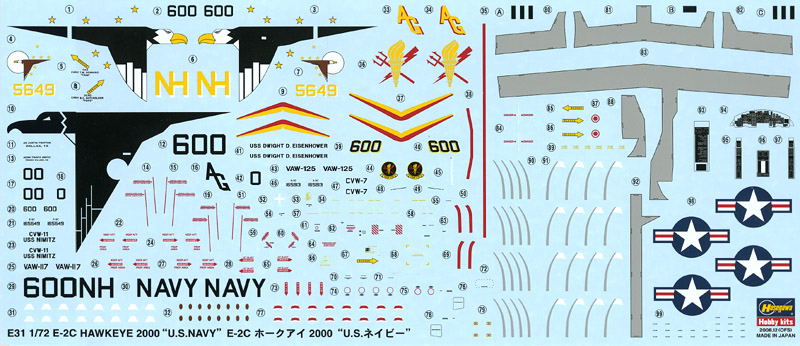 No mention is made in the instructions about rigging, but the box art shows the High Frequency fixed wire antenna arrangement if the modeler wishes to add it.
No mention is made in the instructions about rigging, but the box art shows the High Frequency fixed wire antenna arrangement if the modeler wishes to add it.
The comprehensive decal sheet is very well done with bright colors and good registration. The markings are for two colorful CAG birds: VAW-117/ USS Nimitz and VAW-125/USS Eisenhower.
Prop-tip decals are thoughtfully provided: all-white tips for aircraft option one, and the more common red & white tips for option two. Decals are also present for the narrow unpainted leading edge strip on each prop blade. These are printed in gray (same color as the walkways) but they appear to be silver in my photo references.
Conclusion
Good things come to those who wait. Naval aviation enthusiasts have waited many years for a first-class injection-molded Hawkeye kit, and it has finally arrived. It is time to push aside the old 1/72nd Fujimi Hawkeye kit and upgrade your carrier air wing with this superb new offering from Hasegawa.
